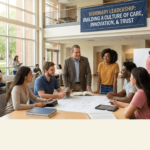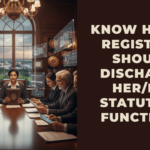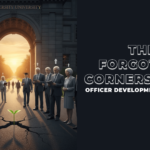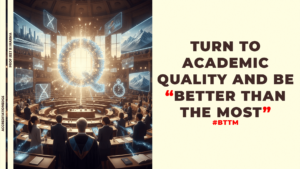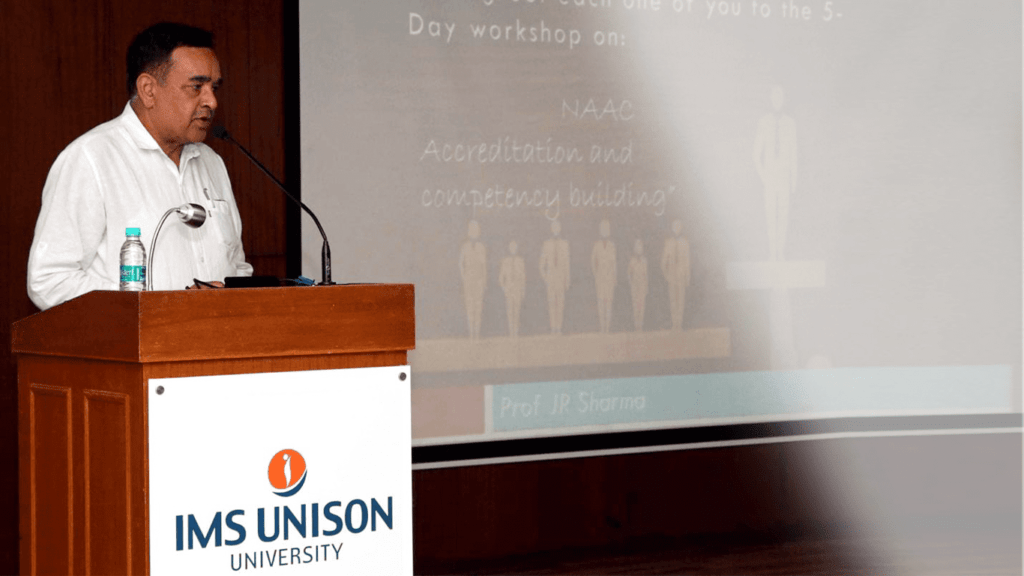Last week, a wonderful university invited me to interact with their middle and higher level leadership and listen to them. I loved this idea of their Pro Chancellor. The young Pro Chancellor with a thinking- head further said that I should listen to them much as Dr listens to a patient, arrives at the diagnosis, and then offers treatment. I was handed over the listening plan of 3 days and asked if I would like to include anything else. I said, “Add BOS members of all departments” but I further said that it might require me to talk also 🙂 To this, he smiled. He has a wonderful smile ! He must be thinking, why I said so.
Here is a reason, I share with you and also with him. The purpose before me is to develop the institution over a long haul. I had always felt that departments are always the pillars of a strong foundation, and in that, the BOS is a key player. It is the academic heartbeat of a university. Every department’s BOS has the power to shape curricula, strengthen teaching–learning practices, anticipate industry and societal needs, and ensure alignment with global standards. When engaged meaningfully, BOS becomes the idea factory that fuels both academic excellence and institutional reputation.
As I start packing up my bag to go to the university, side by side, I have developed a BOS cheat sheet which I share with you all for your learning. It should help faculty of every department understand how they can maximize their role in the BOS-an academic engine room of their respective department
The BOS Composition & Participation
*Chairperson: Head of Department (HOD).
*Core Members: Program heads, specialization/area coordinators, chairs of departmental research & skill centres.
*External Members: Eminent subject experts representing each specialized field, ensuring diversity of perspective and industry relevance (Please add if I missed any).
BOS is unique. It thrives on cross-pollination of ideas. Faculty are not passive participants; they represent the voice of learners, research needs, and industry alignment. If you find some BOS member, inactive wake her/him up to contribute.
Frequency & Timings
*BOS must meet at least twice a year, possibly
November-December: Post–odd semester, for reflective review and May–June before the next academic year, for forward planning.
*Meetings must precede the Academic Council (AC) by at least 15 days so that the BOS minutes feed directly into AC agenda. Timing is critical. Delayed or poorly prepared BOS meetings reduce the ability of your department to influence university-level decisions.
Preparation Protocol (Member Secretary’s Role)
Preparation should begin 2–3 months in advance and involve:
1.Feedback:
(a) Collect and analyze faculty’s course exit reports, students’ mid-semester and end-semester feedback, industry and alumni feedback
(b) Synthesize data and findings into actionable insights (not just statistics).
2.Draft Agenda :-
(a) Consult HOD on key issues.
(b) Invite agenda items from all members.
3.Curriculum Review & Innovation:
(a) Program coordinators after due research and search should submit proposals for:
•Course additions/deletions.
•Syllabus/content revision.
•Specify MOOCs (SWAYAM, NPTEL), certificate skill courses, digital tools, and AI-driven e-resources.
•Introduction of virtual labs, LMS-embedded courses, and blended learning models.
4.Assessment Reforms
•Propose innovations such as rubric-based evaluations, simulation-based assessments, capstone projects, reflective portfolios, and AI-assisted grading tools.
5.Regulatory Alignment
•Ensure compliance with NEP-2020 and regulator’s notifications and guidelines (e.g., multidisciplinary credit transfer, dual and joint degree, accelerated and extended degree, NCrf, skilling, outcome-based frameworks etc.
6.Agenda Circulation:
•Share finalized agenda with supporting documents at least 15 days prior to the meeting.
•Assign presenters for each agenda point—faculty must own agenda items and be ready to justify them with evidence.
Market Intelligence & Future Readiness
•Program heads must undertake market research (employability trends, industry skill demands, accreditation benchmarks).
•Recommendations should be data-driven (placement reports, alumni feedback, sectoral skill gap analyses).
👉🏿BOS must be forward-looking, anticipating the skills of tomorrow.
Continuity & Accountability
•Every BOS must start by reviewing the “Action Taken Report” (ATR) on the previous meeting’s recommendations.
•This ensures credibility, prevents repetitive discussions, and builds a culture of follow-through.
Some Dos
1.Engage proactively: Don’t wait for agenda circulation—initiate proposals rooted in your teaching experience and research insights.
2.Think beyond syllabus: Focus on assessment, pedagogy, digital tools, and student experience.
3.Leverage NEP-2020 opportunities: Introduce interdisciplinary electives, skill-based add-ons, and flexible credit structures.
4.Benchmark globally: Compare your courses with leading international universities (Ivy League, Russell Group, NUS, etc.) and bring those ideas to the table.
5.Be evidence-based: Use data—student feedback, employer input, research trends—to substantiate recommendations.
Don’ts
1. Don’t miss out conducting BOS twice annually.
2. Don’t document BOS minutes of meetings from the back date ever. I was so pained to see some so-called top universities doing it for the NAAC. It is shameful.
3. VC, or Pro VC, Registrar should excuse themselves getting into Departments’ BOS. It is not their forum.
My appeal I request you to NOT restrict your role just to teach in the classroom but to design the classroom of the future.
By Prof JRS- The views expressed are purely personal.

